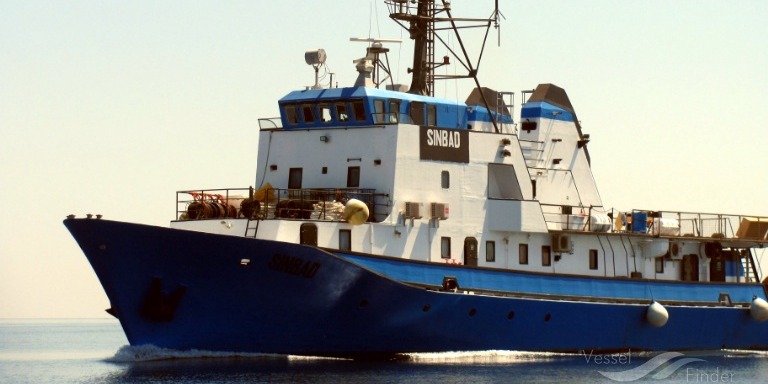31 min read
Vessel Protection - Why where floating armouries created?
The upsurge of piracy in the Gulf of Aden and wider Indian Ocean in 2006 to 2009, led commercial ship owners to...
By: Dryad Global on August 31, 2020 at 8:41 AM

Exploring the inner workings of Floating Armouries, the intricate procedures involved in the initiation, management, and logistics of PCASP embarking and disembarking from FAs may vary. However, a comprehensive overview of how Floating Armouries operate is presented here.

 PCASP will normally fly from their home locations to the port of embarkation, where they will congregate. They will then embark a support vessel (shuttle), which will take them to a FA, where they will be allocated with OEPs belonging to their contracting PMSC. If they are remaining on board the FA for a period they will be allocated accommodation while they await tasking from their PMSC.
PCASP will normally fly from their home locations to the port of embarkation, where they will congregate. They will then embark a support vessel (shuttle), which will take them to a FA, where they will be allocated with OEPs belonging to their contracting PMSC. If they are remaining on board the FA for a period they will be allocated accommodation while they await tasking from their PMSC.
 When the PCASP has been tasked by its PMSC to join a client vessel for a voyage, the team will prepare their OEP and personal kit. The PMSC/PCASP team Leader will arrange with the FA staff for a boat transfer from the FA (FAs normally have small sea going boats available for transfers of PCASP) to the client vessel. The client vessel will pass the FA, between 0.5 to 5 nm at a slow speed (4-6 knots), and the transfer will be conducted (if the weather conditions are safe). The PCASP will then be on task onboard the client vessel.
When the PCASP has been tasked by its PMSC to join a client vessel for a voyage, the team will prepare their OEP and personal kit. The PMSC/PCASP team Leader will arrange with the FA staff for a boat transfer from the FA (FAs normally have small sea going boats available for transfers of PCASP) to the client vessel. The client vessel will pass the FA, between 0.5 to 5 nm at a slow speed (4-6 knots), and the transfer will be conducted (if the weather conditions are safe). The PCASP will then be on task onboard the client vessel.
.png?width=220&height=220&name=Untitled%20design%20(3).png) At the end of a PCASP task on a client vessel, the PCASP team will prepare for disembarkation. The client vessel will pass the FA, between 0.5 to 5 nm at a slow speed, and the transfer will be conducted (if the weather conditions are safe). On arrival at the FA the PCASP will secure their OEP and, if staying onboard, be allocated accommodation on the FA. The PCASP may either be transferred back to a home port as and when possible or remain on board the FA awaiting subsequent tasking.
At the end of a PCASP task on a client vessel, the PCASP team will prepare for disembarkation. The client vessel will pass the FA, between 0.5 to 5 nm at a slow speed, and the transfer will be conducted (if the weather conditions are safe). On arrival at the FA the PCASP will secure their OEP and, if staying onboard, be allocated accommodation on the FA. The PCASP may either be transferred back to a home port as and when possible or remain on board the FA awaiting subsequent tasking.
.png?width=220&height=220&name=Untitled%20design%20(2).png) On completion of their task(s) the PCASP may be returned to a port by support vessel (shuttle), leaving their OEP on board the FA. They will then either fly back to their home locations or may stay at temporary accommodation ashore awaiting re-tasking, or relocate in theatre
On completion of their task(s) the PCASP may be returned to a port by support vessel (shuttle), leaving their OEP on board the FA. They will then either fly back to their home locations or may stay at temporary accommodation ashore awaiting re-tasking, or relocate in theatre
.png?width=220&height=220&name=Untitled%20design%20(1).png)
PCASP can be accommodated on board FAs for varying periods in between tasks. The length of time they remain on board is principally determined by their contracting PMSC. It is estimated by the FA service providers that the average length of stay on board a FA is approximately seven days but there has been the odd occasion when individuals have remained on FAs in excess of 100 days.
PCASP may embark the client vessel in port prior to the OEP collection at the FA, and disembark in port 4 after the OEP drop off, with only the OEP being transferred to/from the FA. In the Red Sea, PCASP can embark the vessel at Suez and not collect their OEP until just outside the HRA boundary in the southern Red Sea some three days later.

The upsurge of piracy in the Gulf of Aden and wider Indian Ocean in 2006 to 2009, led commercial ship owners to...
The decision by governments in the HRA to eliminate potentially insecure or destabilizing stockpiles of weapons from...
It is essential to recognize that Floating Armouries (FAs) are fundamentally vessels and are thus subject to a vast...
Exploring the inner workings of Floating Armouries, the intricate procedures involved in the initiation, management,...
In this article, we collect the key regulations governing the operation of floating armouries. UNCLOS Articles 17-19...
Floating armouries, which store weapons for Private Maritime Security Companies, operate under a patchwork of...
Delving into the complex operations of Floating Armouries, this mini-series explores the legal..
In this article, we collect the key regulations governing the operation of floating armouries.
Floating armouries, which store weapons for Private Maritime Security Companies, operate under a..
Press/media contact
Email Us
General Enquiries
Contact Us Here